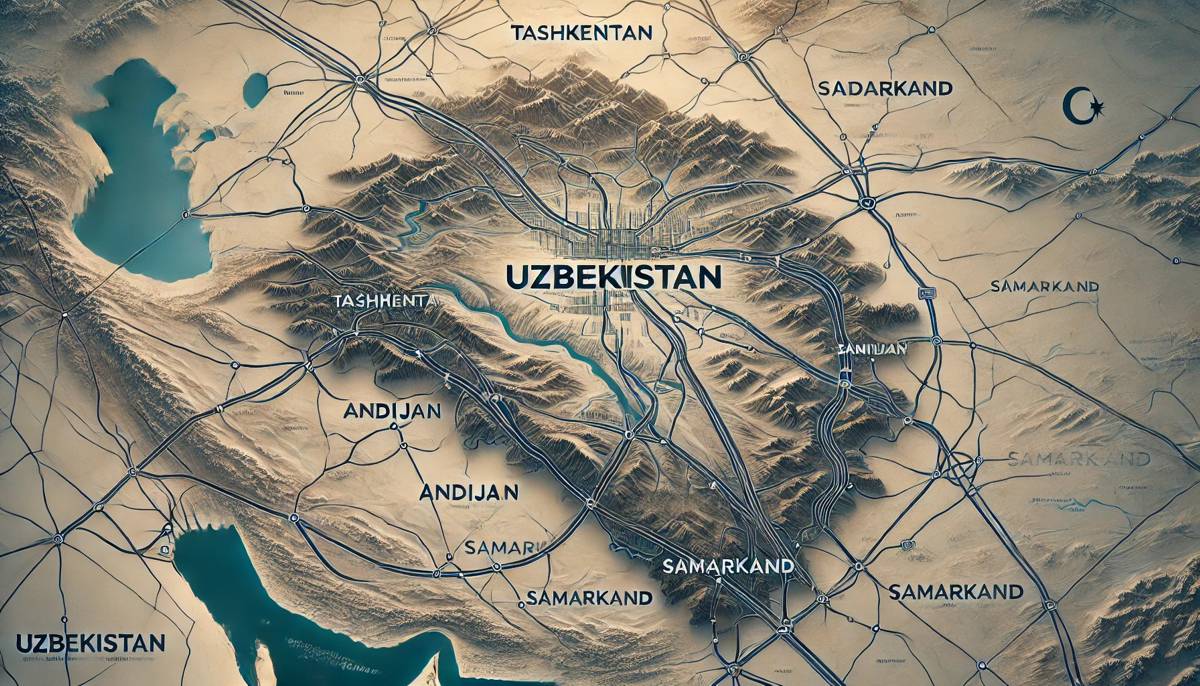The Himalayan Marvel – China’s Grand Railway Ambition
In the heart of the Himalayan region, where China’s Tibet meets the borders of Pakistan, India, Nepal, Bhutan, and neighbouring nations, lies the awe-inspiring grandeur of the world’s highest mountain range, the Himalayas.
With its majestic summits, undulating landscapes, and captivating glacier vistas, this region has become a coveted destination for countless adventurers and explorers. Yet, amidst the mystique of these towering peaks, a remarkable infrastructure venture is currently unfolding. China’s construction company’s are diligently crafting a super tunnel, approximately 30 kilometres in length, with the aim of seamlessly integrating state-of-the-art railway tracks within this natural splendour.
For China, this endeavour surpasses mere tunnel construction; it represents an unparalleled human feat.
On August 8, 2022, a notable event took place. The Nepalese foreign minister embarked on a visit to China, and during the discussions between the two nations, Nepal expressed its aspiration to establish a comprehensive interconnected transport network with China spanning the Himalayan landscape. This network takes the form of the ongoing China-Nepal Railway. However, it might surprise you to learn that this railway concept has roots dating back as far as four decades ago when China’s Mao Zedong extended an infrastructure commitment to Nepal. Strangely enough, it wasn’t until recent times that the notion of actualizing this railway took shape.
The delay in China’s implementation of this railway over the years can be traced back to historical challenges both China and Nepal faced, including technical and financial obstacles that made this immensely complex railway endeavor seem impossible. Nonetheless, with the evolution of China’s infrastructure capabilities and technological prowess, the year 2022 witnessed a significant investment of around 4.3 billion dollars by China to facilitate the construction of the China-Nepal Railway.
As a landlocked country, Nepal has long been impeded by transportation issues, with its mountainous terrain hampering travel. Completion of the China-Nepal Railway will connect three major cities in Nepal, making commuting much easier. Never again will Nepalese citizens have to choose between just cars and planes when going abroad. The designated section of this mammoth project within China’s borders meanders across the Tibet Autonomous Region. In the first half of 2022 alone, the region received more than 17 million tourists. Assuming only one-tenth of these travelers visit Nepal by train via Tibet, Nepal’s tourism industry would still enjoy an enormous boost. Railways will also reshape Nepal’s dependence on India for maritime transport, thereby driving its foreign trade and socioeconomic growth.
The China-Nepal Railway is currently renowned as one of the most formidable railway projects globally. This endeavor unfolds within the Himalayan region, encompassing seismic zones and glaciers. Throughout the entire course of construction, unforeseen challenges are rife, including harsh weather conditions and the threat of mudslides. These variables significantly amplify the complexity of the project, necessitating the deployment of advanced technical methodologies and meticulously crafted design strategies to uphold the paramount aspects of construction quality and safety.
The new railway extends the Qinghai-Tibet Railway, a branch of China’s Qingzang Railway line, into Nepal. According to the project plan, the total length of the China-Nepal Railway is about 540 kilometers. Its starting point is located in Tibet, China, and the railway extends to Kathmandu, the capital of Nepal. The construction period is expected to last for 10 years. An astonishing facet of this entire undertaking is that out of the 98 segments constituting the China-Nepal Railway, a staggering total of 540 kilometres are comprised of bridges and tunnels.
Among these tunnels, 45 intricately traverse the formidable Himalayas. A paramount challenge within this venture lies in the need for the railway to traverse the Mala Mountains, an offshoot of the Himalayas. This undertaking involves constructing a colossal tunnel through the Mala mountain called the Himalayas Tunnel.
As widely recognized, the Himalayas stand as Earth’s loftiest mountains, inhabited by only a few due to their formidable nature. Endeavoring to erect engineering marvels in this region presents an undoubtedly Herculean task. To ensure the seamless passage of the China-Nepal Railway amidst these towering peaks, China initiated the construction of the Himalayas Tunnel in February 2023.
After five months of relentless efforts, the tunnel project achieved an excavation progress of 1,680 metres. Notably, for nations such as the United States and Germany, achieving such a milestone might entail over a year of work. Nevertheless, the Chinese construction team’s progress represents merely a fraction of the entire tunnel project. According to the railway blueprint, the comprehensive length of the Himalayas Tunnel spans approximately 30 kilometres.
China’s investment in this endeavour is anticipated to exceed 1.4 billion dollars, averaging around 46 million dollars per kilometre. Interestingly, when compared with the cost of the world’s longest railway tunnel, the Gotthard Tunnel, which stood at about 198 million dollars per kilometre, the efficiency and scale effect of China’s infrastructure initiatives become apparent. While it’s commonly asserted that China’s infrastructure projects possess superior cost-effectiveness and scale compared to those of other nations, the present construction speed estimation indicates that the Chinese construction team is poised to achieve a ground-breaking accomplishment with the Himalayas Tunnel before December 2024.
Undoubtedly, the challenges entailed in constructing a super tunnel are beyond conception. Firstly, the tunnel is situated within a high-altitude cold region, introducing a significant obstacle to engineering operations. In this alpine expanse, the deficiency of oxygen emerges as a primary concern. Geographers’ insights revealed that the oxygen concentration in the air at altitudes surpassing 4,800 meters above sea level is less than half of that observed in lower regions. Consequently, for the realization of the Himalayas Tunnel, the construction team must sustain regular work routines while ensuring a continuous supply of oxygen through specialized generators.
Meanwhile, in order to speed up the efficiency of construction, China has deployed the General Shield Machine, a ground-breaking creation conceived and developed entirely within the country. This mammoth tunnel boring machine boasts a remarkable diameter of 16.07 meters and an impressive mass of 4,300 tons. Its capabilities are astonishing; it can excavate a tunnel segment equivalent in height to almost six stories in a single pass. This machinery has proven itself as a pivotal instrument in the undertaking of the Himalayas Tunnel. Operating mechanisms within the General Shield Machine’s core facilitate the propulsion of excavation processes. It employs forward-cutting blades and cutting-edge technology to cleave through soil layers. Concurrently, it seamlessly disposes of the excavated earth, conveying it out of the tunnel and away from the site through a conveyor belt mechanism. As the shield machine progresses to a specific distance along its course, a reinforced support system comes into play. This entails the application of precast concrete lining augmented by the integration of steel sheet piles and sturdy steel arches.
Furthermore, the deployed equipment will actively engage in geological surveys and predictive analyses to uphold construction safety standards. Alongside these efforts, the task of transporting construction materials and essential provisions for the workforce relies on road transportation within China’s construction teams. However, the transportation of materials within high-altitude regions poses immense risks, compounded by the remote and desolate nature of the Alpine mountain environment. The situation becomes even more precarious considering historical records revealing a grim instance during the construction of the Qinghai-Tibet Railway. In that case, more than a hundred lives were lost due to a catastrophic tire blowout incident during road transportation. The treacherous conditions prevailing at high altitudes exacerbate the pressure differential between car tires’ interior and exterior, leading to frequent tire blowouts. In light of these circumstances, the complexities of transportation present a significant engineering challenge in this project.
But why is China committing such substantial resources to construct the dangerous China-Nepal Railway? In truth, the diplomatic ties between China and Nepal have maintained a strong rapport for as far back as four decades ago. These two nations forged a robust relationship. Nevertheless, Nepal’s progress has been historically tethered to India’s influence. During a visit by a Nepalese delegation to China, Chairman Mao of China once conveyed a promising message that once the road is restored, Nepal need not harbor undue concerns about India.
With China now wielding considerable prowess in infrastructure and technology, the nation is resolute in honouring the commitment it made to Nepal over four decades ago. Beyond aiding Nepal’s enhanced development, this endeavour holds an additional pivotal motive. China harbours astute considerations for South Asia’s political landscape.
As a comprehensive entity, the imposing presence of the Himalayan barrier has long isolated China from the Indian subcontinent. However, with the imminent realization of the China-Nepal Railway, a groundbreaking shift is on the horizon. This railway will not only foster connectivity with the Indian subcontinent but also establish a direct link with the Indian railway network, effectively reaching the Bay of Bengal and thus facilitating a maritime route circumnavigating the bay. Looking forward, the China-Nepal Railway will even serve as the linchpin connecting the intricate tapestry of railway networks across Southeast Asian nations.
Moreover, China has been diligently orchestrating the Trans-Asian Railway Initiative, an ambitious endeavor aimed at establishing an interconnected railway framework spanning ASEAN nations and further interlinking with the expansive Eurasian railway network. Upon its fruition, this comprehensive blueprint will forge a secure and efficient overland corridor, enabling China to diminish its reliance on maritime transportation during critical circumstances. Concurrently, this concept holds the potential to foster improved geopolitical dynamics within South Asia.
Yet, even within the realm of geopolitical manoeuvring, the China-Nepal Railway possesses the capacity to emancipate Nepal from India’s dominion. Assuming a pivotal role as a strategic linchpin, it enables China to counterbalance India’s escalating influence in the region.















